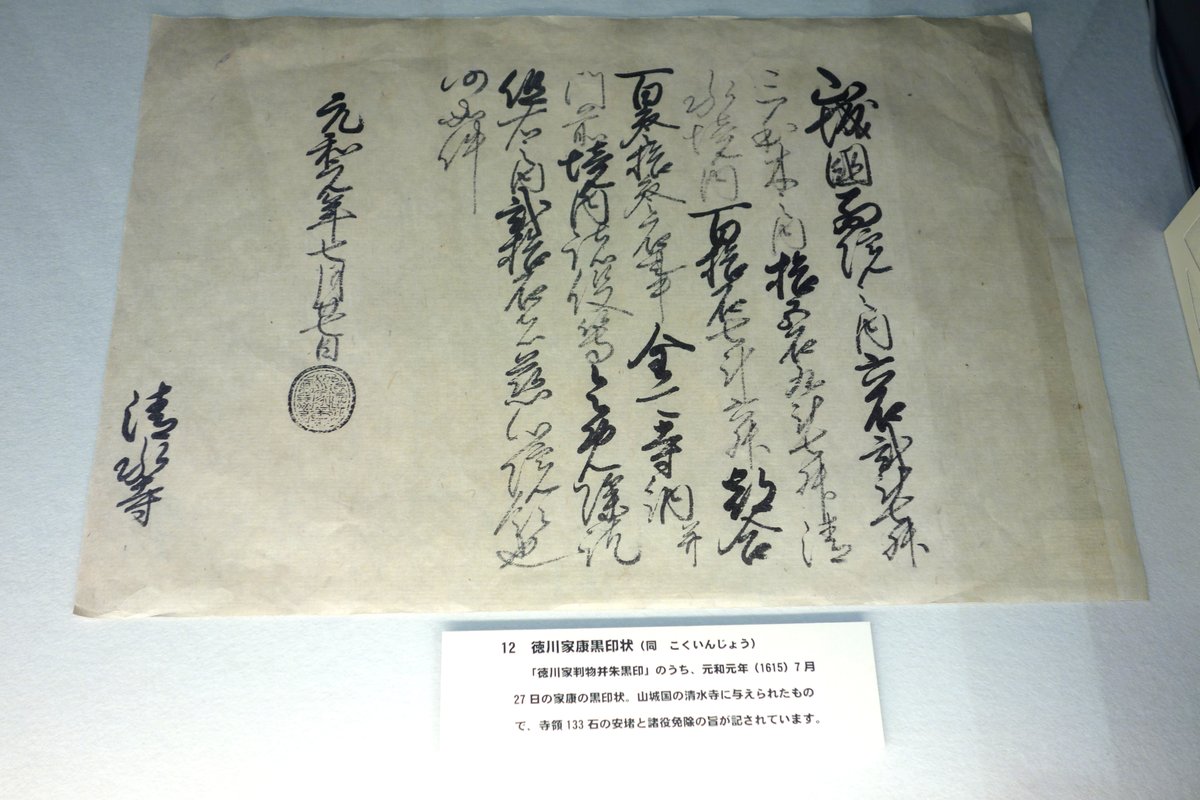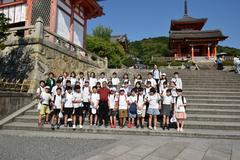
Kiyomizu-Dera Visiting Hours, Tickets, and Guide to Kyoto’s Historical Sites
Date: 14/06/2025
Introduction to Kiyomizu-Dera and Its Significance in Kyoto
Kiyomizu-dera, known as Kyoto’s “Pure Water Temple,” stands as a remarkable testament to Japan’s cultural, architectural, and spiritual heritage. Founded in 778 CE, before Kyoto became the imperial capital, this Buddhist temple is celebrated for its magnificent wooden main hall, constructed without nails and dramatically perched above the city on the slopes of Mount Otowa. The temple is revered not just for its engineering marvels but also for its spiritual atmosphere, highlighted by the sacred Otowa Waterfall, believed to grant blessings of longevity, academic success, and love. The adjacent Jishu Shrine, dedicated to matchmaking, further enhances its reputation as a place of hope and devotion.
Kiyomizu-dera’s status as a UNESCO World Heritage Site reflects its deep-rooted importance in Japanese history. The temple complex, with its numerous sub-temples, pagodas, and the historic streets of Ninenzaka and Sannenzaka, offers visitors an immersive journey through Kyoto’s past and present. Seasonal events—including cherry blossom and autumn foliage illuminations—continue to captivate visitors, making Kiyomizu-dera an essential destination for anyone seeking to experience Kyoto’s rich cultural tapestry. For official updates, consult the Official Kiyomizu-dera Website, World History Encyclopedia, KKday, and Live Japan.
Table of Contents
- Introduction
- Historical Overview and Cultural Significance
- Visiting Kiyomizu-Dera: Hours, Tickets, and Access
- Architectural and Artistic Highlights
- Seasonal Beauty and Annual Events
- Exploring the Temple Grounds and Surrounding Streets
- Travel Tips and Practical Information
- Frequently Asked Questions (FAQ)
- Conclusion and Visitor Recommendations
- Sources and Further Reading
Historical Overview and Cultural Significance
Foundation and Early History
Kiyomizu-dera’s origins date to 778 CE, when the monk Enchin Shonin established the temple after being inspired by a vision and the presence of the Otowa spring (Wikipedia; World History Encyclopedia). The site’s spiritual resonance stems from the belief in the healing and wish-granting powers of the Otowa Waterfall. In 798 CE, shogun Sakanoue no Tamuramaro contributed to the temple’s growth by relocating a hall from Emperor Kammu’s palace. By 805 CE, Kiyomizu-dera had become an imperial temple, underscoring its early religious and political significance.
Architectural Evolution and Restoration
Kiyomizu-dera is renowned for its architectural ingenuity, particularly its main hall (Hondō) and the famed Kiyomizu Stage. Supported by 139 towering wooden pillars assembled without nails, this platform exemplifies the kakezukuri style and is celebrated for its resilience and integration with the natural environment (The Tourist Checklist; World History Encyclopedia). The temple has been reconstructed multiple times due to fires, with the current main structures dating to the 1633 reconstruction under Tokugawa Iemitsu (World History Encyclopedia). The Koyasu Pagoda, built between 1607 and 1633, is a designated National Treasure and especially associated with prayers for safe childbirth.
Preservation efforts, including the restoration of the Niomon Gate in 2003 and the main hall’s pillars in 2017, ensure the temple’s longevity while accommodating modern visitors (World History Encyclopedia).
Religious and Spiritual Significance
Originally affiliated with the Hossō school of Buddhism and now the center of the Kita-Hossō sect, Kiyomizu-dera enshrines the Eleven-Headed Thousand-Armed Kannon Bodhisattva, a hidden Buddha displayed only once every 33 years (Tourist Japan). The Otowa Waterfall, divided into three streams, attracts visitors seeking blessings, while Jishu Shrine’s love stones offer a playful yet sincere ritual for those seeking romantic fortune (History Hit). The blend of Buddhist and Shinto elements reflects the syncretic nature of Japanese spirituality.
Visiting Kiyomizu-Dera: Hours, Tickets, and Access
Opening Hours
- General Hours: 6:00 AM – 6:00 PM (April–October), 6:00 AM – 5:00 PM (November–March)
- Special Illuminations: Extended hours until 9:30 PM during spring and autumn events (Official Kiyomizu-dera Site)
Ticket Information
- Regular Admission: 400–500 yen for adults, 200 yen for children (Charcotrip; Japan Travel Explorer)
- Special Event Admission: Same as regular unless otherwise noted; tickets available at the entrance.
Accessibility
Kiyomizu-dera’s hillside location means pathways are steep and stone-paved. While some improvements have been made, wheelchair access is limited, and visitors with mobility challenges may need assistance (Any Travel Tips).
Guided Tours and Events
Guided and audio tours are available and recommended for a deeper understanding of the temple’s history and art. Seasonal illuminations and Buddhist ceremonies offer unique experiences; check the official website for updates.
Top Photography Spots
The Kiyomizu Stage provides panoramic city views, particularly stunning during cherry blossom and autumn foliage seasons. Other prime spots include the Sanju-no-to Pagoda and Jishu Shrine’s torii gates. Observe signage regarding photography restrictions.
Architectural and Artistic Highlights
Main Hall (Hondō) and Kiyomizu Stage
The Main Hall is the architectural and spiritual heart of Kiyomizu-dera, with its vast stage built without nails and supported by a lattice of cypress pillars (KKday; Agoda). The phrase “to jump off the stage at Kiyomizu” symbolizes taking a leap of faith in Japanese culture (Walk Around Blog).
Otowa Waterfall
The temple’s namesake waterfall is divided into three streams, each granting distinct blessings. Visitors use ladles to drink from one stream, as tradition discourages sampling all three (Any Travel Tips).
Jishu Shrine
This shrine is dedicated to the god of love and matchmaking. The ritual of walking between its “love stones” with eyes closed is a highlight for many visitors (Agoda; WanderOn).
Nio-mon Gate and Sanju-no-to Pagoda
The Nio-mon serves as a grand entrance, while the Sanju-no-to (three-story pagoda) stands as one of Japan’s tallest and most photogenic pagodas, especially during seasonal illuminations (Japan Travel Note).
Seasonal Beauty and Annual Events
Spring (Cherry Blossoms)
Over 1,000 cherry trees bloom from late March to early April, with special night illuminations creating a magical atmosphere (Live Japan; Kyoto Travel).
Summer
The temple is enveloped in lush greenery, offering a tranquil retreat. Occasional summer night illuminations add to the serene ambiance (Live Japan).
Autumn (Maple Foliage)
From mid-November to early December, the temple is surrounded by vivid maple leaves. Nighttime illuminations during this period are particularly popular (Japan Travel; Inside Kyoto).
Winter
The grounds are serene and occasionally blanketed in snow. Though there are no major illumination events, winter offers peaceful, crowd-free visits (Enjoy Kyoto).
Exploring the Temple Grounds and Surrounding Streets
The temple complex includes the Okunoin Hall and over 30 sub-temples, each with unique features (Walk Around Blog). The approach via Kiyomizu-zaka, Sannenzaka, and Ninenzaka is lined with traditional shops and offers a glimpse into Kyoto’s past (Japan Travel Note).
Travel Tips and Practical Information
- Getting There: Easily accessible by Kyoto City Bus 100/206 from Kyoto Station (get off at Kiyomizu-michi or Gojo-zaka) or a 15–20 minute walk from Kiyomizu-Gojo Station (Charcotrip; Seasonal Japanese Garden).
- Best Times to Visit: Early mornings and late evenings (during illumination events) are less crowded.
- Accessibility: Wear comfortable shoes for uphill walks and stone paths; some areas may be slippery.
- Facilities: Restrooms near entrances; shops and eateries along the approach offer local treats (Charcotrip).
- Photography: Allowed in most areas; no tripods, drones, or flash inside buildings.
- Duration: Allow 1.5–3 hours for a complete visit and time to explore nearby historic streets.
Frequently Asked Questions (FAQ)
Q: What are Kiyomizu-dera’s visiting hours?
A: Open daily from 6:00 AM to 6:00 PM (April–October), 6:00 AM to 5:00 PM (November–March); extended hours during special events.
Q: How much are Kiyomizu-dera tickets?
A: 400–500 yen for adults, 200 yen for children; tickets are purchased at the entrance.
Q: Is Kiyomizu-dera wheelchair accessible?
A: Some areas are accessible, but the hillside and stone paths can be challenging.
Q: When is the best time to visit?
A: Spring (cherry blossoms) and autumn (maple foliage) are most popular, but early mornings and winter offer tranquil experiences.
Q: Can I buy tickets online?
A: Currently, tickets are sold at the entrance; no advance reservation required.
Conclusion and Visitor Recommendations
Kiyomizu-dera is a captivating destination that blends history, spirituality, and natural beauty. Its dramatic architecture, sacred rituals, and vibrant seasonal events offer visitors a profound connection to Kyoto’s cultural heritage. Plan your visit to coincide with cherry blossoms or autumn foliage, arrive early to avoid crowds, and take time to explore both the temple and the charming streets of Higashiyama.
For updates, travel tips, and more, download the Audiala app, consult the Kiyomizu-dera Official Website, and explore trusted travel resources. Experience the heart of Japan’s heritage at Kiyomizu-dera, where history, faith, and artistry converge in unforgettable harmony.
Sources and Further Reading
- This is a sample text. (https://en.wikipedia.org/wiki/Kiyomizu-dera)
- This is a sample text. (https://www.worldhistory.org/Kiyomizu-dera/)
- This is a sample text. (https://thetouristchecklist.com/%E6%B8%85%E6%B0%B4%E5%AF%BA/)
- This is a sample text. (https://www.kkday.com/en/blog/62507/asia-japan-kyoto-kiyomisu-dera-guide)
- This is a sample text. (https://www.agoda.com/travel-guides/japan/kyoto/unveiling-kiyomizu-dera-a-comprehensive-travel-guide-to-kyotos-iconic-temple/)
- This is a sample text. (https://livejapan.com/en/in-kansai/in-pref-kyoto/in-nijo-castle_kyoto-imperial-palace/article-a2000624/)
- This is a sample text. (https://visitinsidejapan.com/travel-in-japan/kiyomizu-dera-temple-history-and-attractions/)
- This is a sample text. (https://palospublishing.com/the-cultural-significance-of-the-kiyomizu-dera-temple-in-kyoto/)
- This is a sample text. (https://charcotrip.com/en/kiyomizu-dera-temple-kyoto/)
- This is a sample text. (https://en.japantravel.com/kyoto/kiyomizu-dera-autumn-illumination/29524)
- This is a sample text. (https://www.insidekyoto.com/kiyomizu-dera-temple)
- This is a sample text. (https://www.seasonal-japanese-garden.com/kyoto/kiyomizu-dera-temple-the-best-time/)











































































